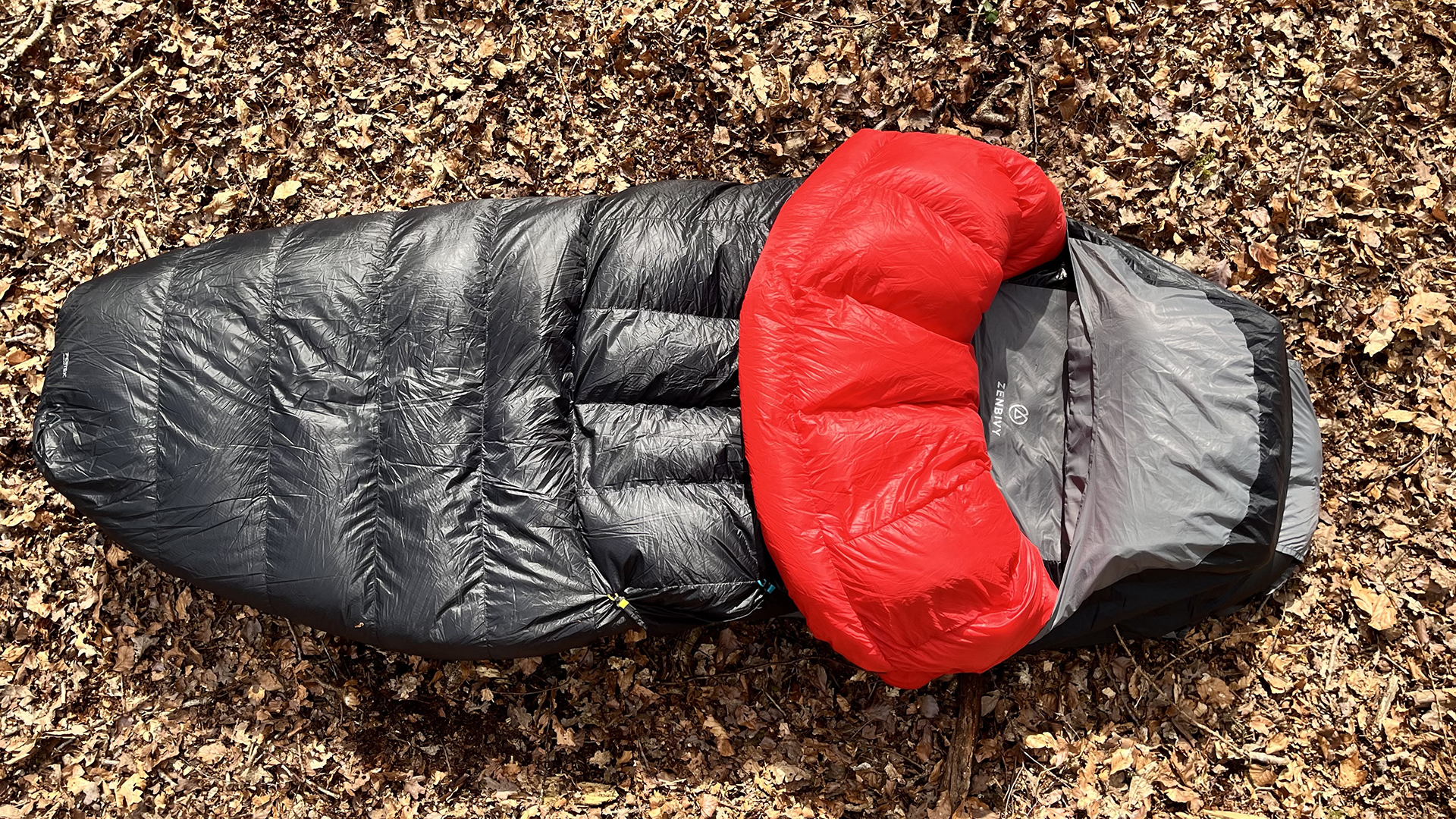
Meet the reviewer
Zenbivy Ultralight Bed: first impressions
Working in the outdoor industry for as long as I have, I’ve become a little numb to the idea of ‘innovation’. In my experience, properly innovative takes on tents, sleeping bags and sleeping pads are few and far between, and I can probably count on one hand the number of truly ‘innovative’ products I’ve come across over the years. That’s not to say that new products are boring or unimpressive – I’ve got my hands on lots of kit over the last few years which has impressed me no end. But many of the so-called ‘innovations’ have merely been subtle tweaks on tried and tested designs. This has resulted in me becoming quite the sceptic when a brand proclaims their version of a product to be ‘the most comfortable’, ‘the most innovative’, or the most ‘game-changing’ out there.
On the flip side of this uncomfortable truth, however, is the fact that when something properly innovative does land in my postbox, I get more excited than a kid on Christmas morning. Which is precisely what happened when I got my hands on the Ultralight Bed from Zenbivy. What I thought was just another sleep system turned out to be the most exciting piece of kit I’ve seen yet this year. So what is it exactly?
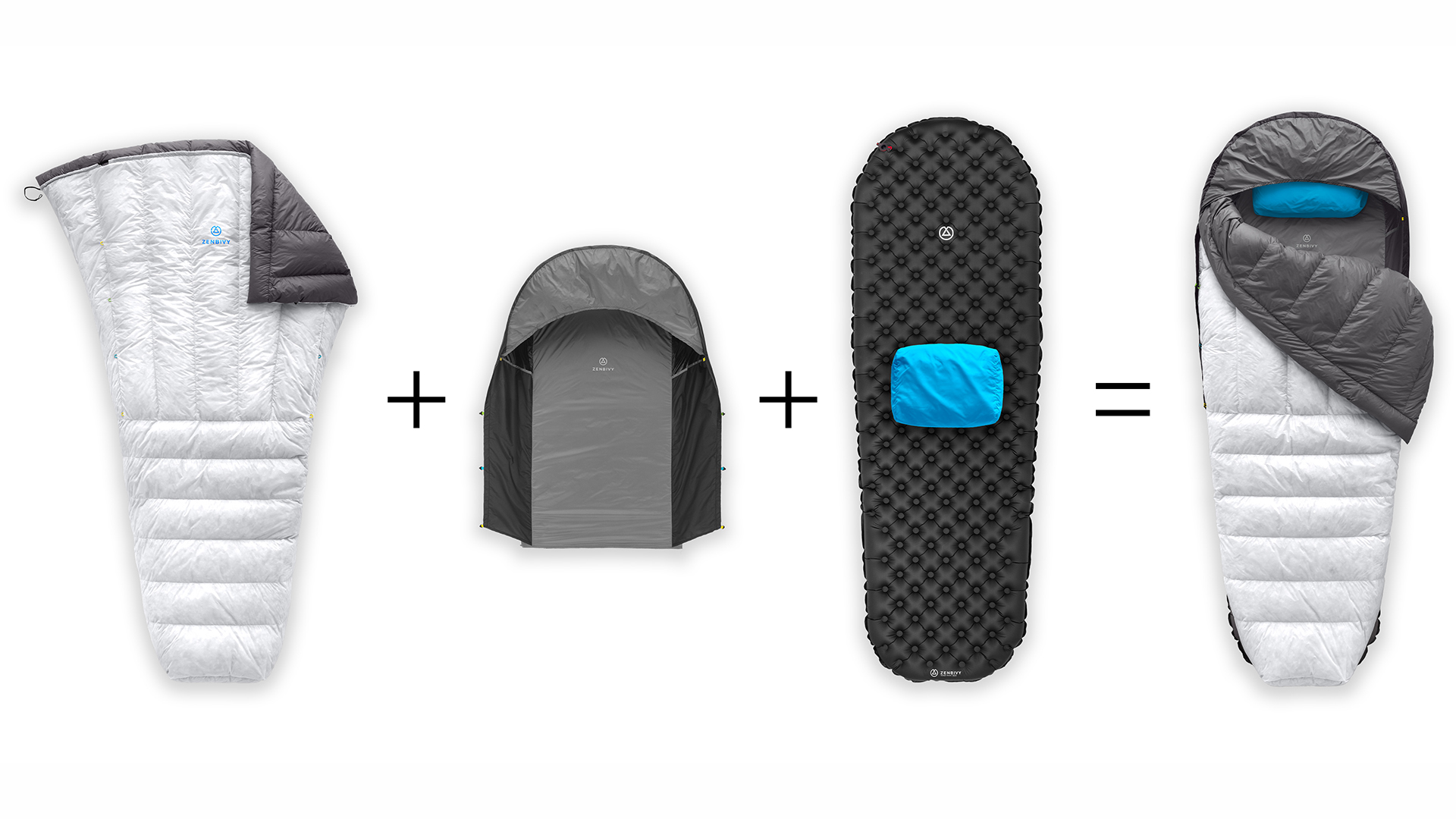
The Zenbivy Ultralight Bed is a modular sleep system comprising an ultralight mattress, a quilt, a sheet and a pillow. All of the items must be bought separately and, with the exception of the sheet and the quilt which work best together, you can swap out individual items for competing lines if, for example, you’ve already got a sleeping pad or camping mattress you don’t want to replace.
• List price: $687-$1,037 depending on the configuration
• Sizes available: Regular, Large, XL
• Weight: 25° Ultralight Down Quilt in regular: 482g / 17oz; 20x72 Ultralight Mattress: 482g / 17oz; Ultralight Sheet: 76g / 2.7oz
• Colors: Silver/Grey, Black/Red
• Compatibility: Camping, backpacking, thru-hiking
Individually, all of the various components are excellent: they’re warm, lightweight, high quality and easy to use. Unfortunately, however, the setup doesn’t run cheap. The pad alone will cost you $189, whereas the quilt on its own will set you back another $409 for the 25°F / -4°C configuration. When you factor in the cost of the sheet ($89 for the uninsulated version, the type we’re testing here), as well as an additional $70 for the pillow system, it quickly adds up. The full cost of the set-up we’re looking at here would retail at $956, which includes the 10°F / -12°C quilt, pad, uninsulated sheet, pillow and a seven-liter dry bag ($29) to carry it all in. Which, to be clear, is breathtakingly expensive for your average wild camper. But let’s park our concerns about the finances for a moment and take a look at how it performs in the wild.
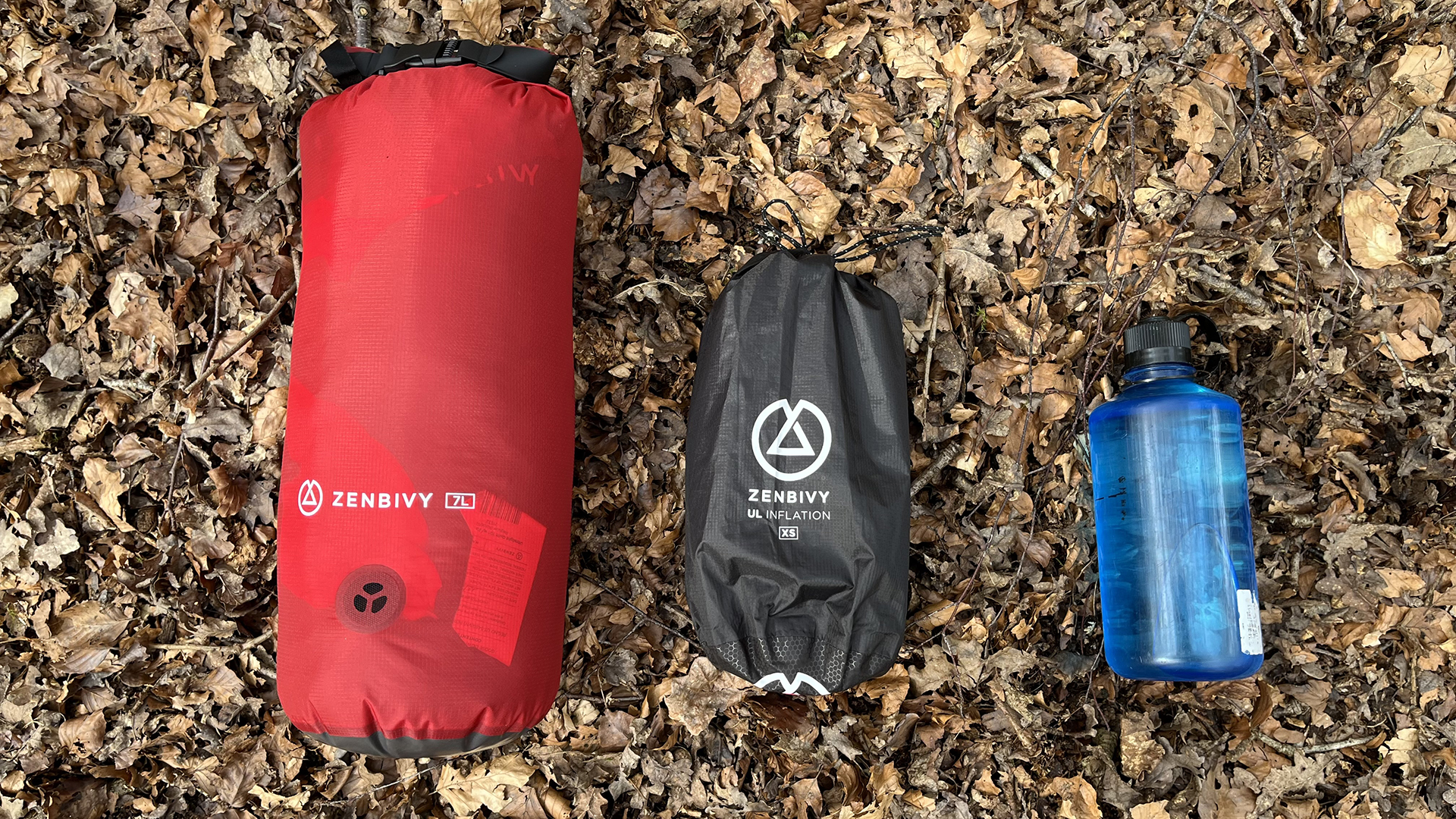
Zenbivy Ultralight Bed: in the wild
When the Zenbivy turned up, I was a little unsure how to properly test this thing. Despite being impressed off the bat, the fact that it comes in so many modular pieces was confusing at first, and it took me a second to figure out how it all came together. Thankfully, Zenbivy provides a handy instruction slip that guides you in the right direction. And lo and behold, after inflating the pad and throwing things together like I was making a sandwich, the Zenbivy came to life in seconds. Having never been so excited to go camping, I immediately disassembled everything, packed it all in the stuff sack provided and headed out to a local woodland for my first test of the Zenbivy Ultralight Bed.
Since this initial first night, I’m happy to say that I’ve used the Zenbivy twice more – once in the same location, and once on a mid-week overnighter out on Dartmoor in south-west England. What’s more, due to the unpredictable weather (even by UK standards) through the end of March to mid-April, I was able to test it in temperatures ranging from a low of freezing all the way through to around 50°F / 10°C. And honestly, I’ve never slept so well outside.
To be clear, I’m a notoriously bad sleeper in a tent. Though wild camping is the thing I probably spend most of my time doing (aside from writing about wild camping), I’m still yet to master the art of sleeping like a bear. Even super comfortable pads like the Sea to Summit Ether Light XT Extreme or luxurious and expensive sleeping bags like the Therm-a-Rest Parsec have not been enough to give me the sound sleep I’m always yearning for outside. And while that’s not to say they don’t do a good job, getting a solid eight hours of shut-eye is something I’ve not even come close to getting. Until now.

Zenbivy Ultralight Bed: how the system works
Seriously, if you take anything from this review, it should be that the Zenbivy is comfortable. Or as comfortable as you can ever expect to be in a tent, at least. The sleeping pad is supportive, super quiet and – coming with an R-value of around 4.8 – lovely and warm for three-season use. It also has a tiny packed size and weighs an impressive 482g / 17oz, which is only 100g more than the slightly more expensive (and equally warm) Therm-a-Rest NeoAir XLite NXT. Made from a 10D Pertex fabric and filled with super high-quality 900 fill-power down, the quilt is also more comfortable than the one on my bed at home. The material is soft and cosy against your skin, and the down filler is wonderfully cushiony and springy, even after being compressed down into a tiny stuff sack for the best part of 36 hours.
Then you’ve got the sheet: this is made of the same 10D Pertex lining you get on the Ultralight Quilt, and it sits tight and firm down over the sleeping pad when attached correctly. Which is where Zenbivy have managed to change the game. The sheet is soft against your skin and substantially more comfortable than sleeping on a conventional sleeping pad alone. And as it comes with two rows of color-coordinated clips that line up with corresponding tassels on the quilt, you can easily fasten everything down so that you’re cocooned inside. When done correctly, the sheet rises about 10 cm over the sides of the quilt, locking everything in and blocking out drafts completely.
Inside the hood of the sheet, you’ve also got two easy-to-use and intuitive little clips that correspond to tassels on the pillow. This way, you can lock the pillow in place so that your head stays supported when you toss and turn in the night. Oh, and while we’re on the topic of the pillow, this thing is also a stroke of genius. It comprises a very lightweight and packable TPU air bladder (which – were I to note one flaw in the system – is the most fragile component of the whole Zenbivy Ultralight Bed) and a luxuriously soft down pillow topper. The result is a very comfortable modular pillow that is a joy to sleep on and is the best representation I’ve ever come across of the type of pillow I’d sleep on at home.
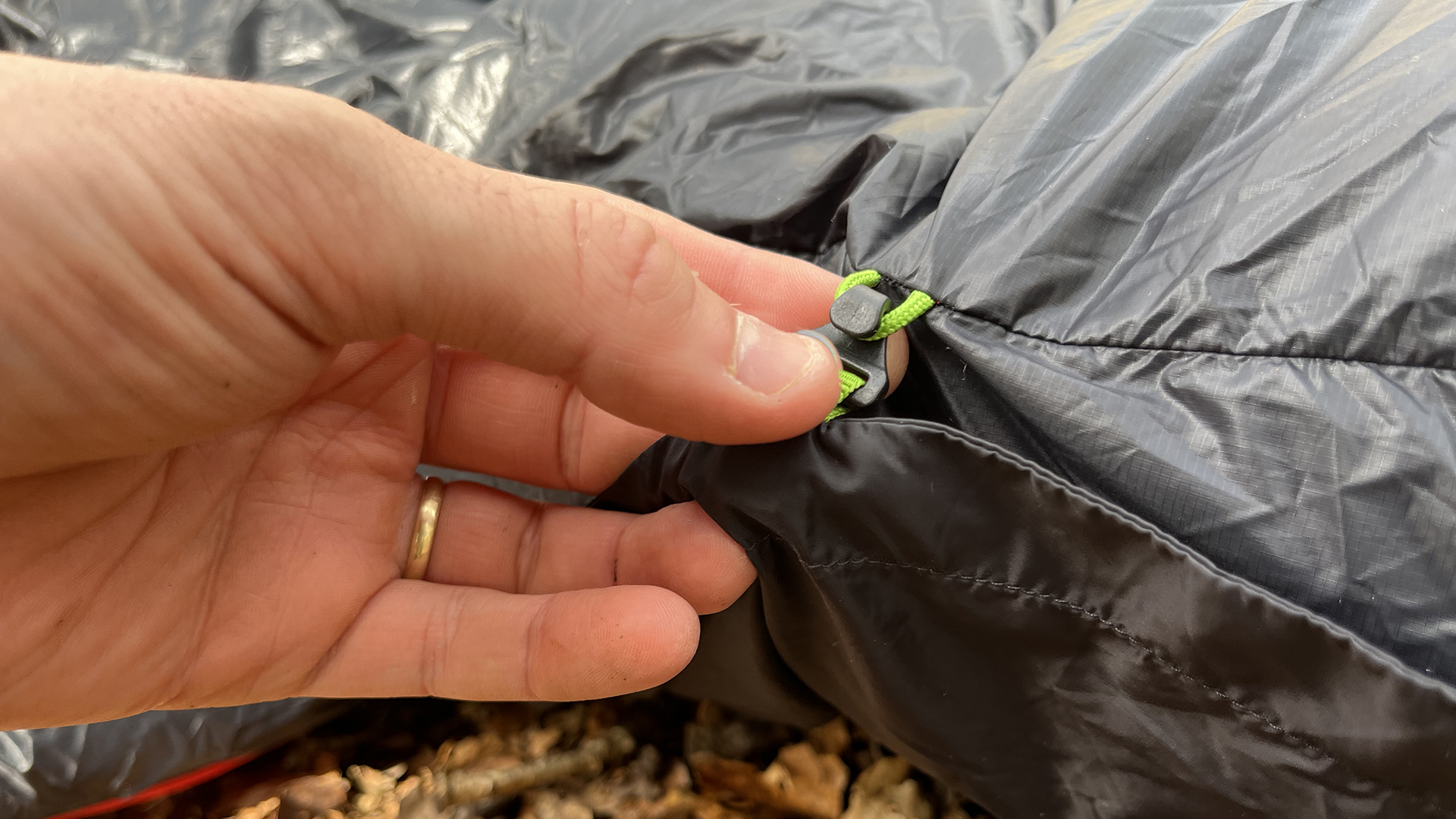
Zenbivy Ultralight Bed: how warm is the system?
By now it should be pretty clear that I think the Zenbivy Ultralight Bed is comfortable. But what about how warm it keeps you? Well, I tested the 10° F / -12°C version of the Ultralight Quilt, combined with the Ultralight Sleeping Pad and found it to be plenty warm enough down to freezing. And even though I couldn’t take this setup down past that during my testing trips, I’d be more than confident dropping down into seriously cold temperatures with the Zenbivy Ultralight Bed.
If you’re planning on doing so, however, there are some things you need to be aware of. Firstly, the uninsulated version of the sheet (the version I tested) doesn’t do anything to keep your head warm, which could be an issue in super cold weather. To mitigate this, Zenbivy sells insulated versions of their sheets, which come with down filling in the hood space to prevent heat loss.
For UK use, however, I think the uninsulated sheet does a good enough job, as you can simply roll up a down jacket into the hood on the coldest nights. What’s more, with a large neck baffle and a drawcord to pull everything in tight, you can cinch the quilt down tightly around your neck to keep heat inside overnight. Secondly, while I would have no issue taking the sheet and the quilt down into temperatures below freezing, I’d opt for a warmer pad. As mentioned above, the R-value of the Ultralight Pad is 4.8, which makes this a reliably warm option for three-season adventures. And even though I didn’t feel any cold spots whatsoever down to freezing, I wouldn’t be overly keen to try it in anything substantially below that. Were I to use this system in temperatures down to the Ultralight Quilt’s advertised 10°F / -12°C limit, I’d pair it with something like the Therm-a-Rest NeoAir XTherm NXT, or an equivalent pad with an R-value of around 7, or at the very least add a thick foam matt underneath the Zenbivy Ultralight Pad.
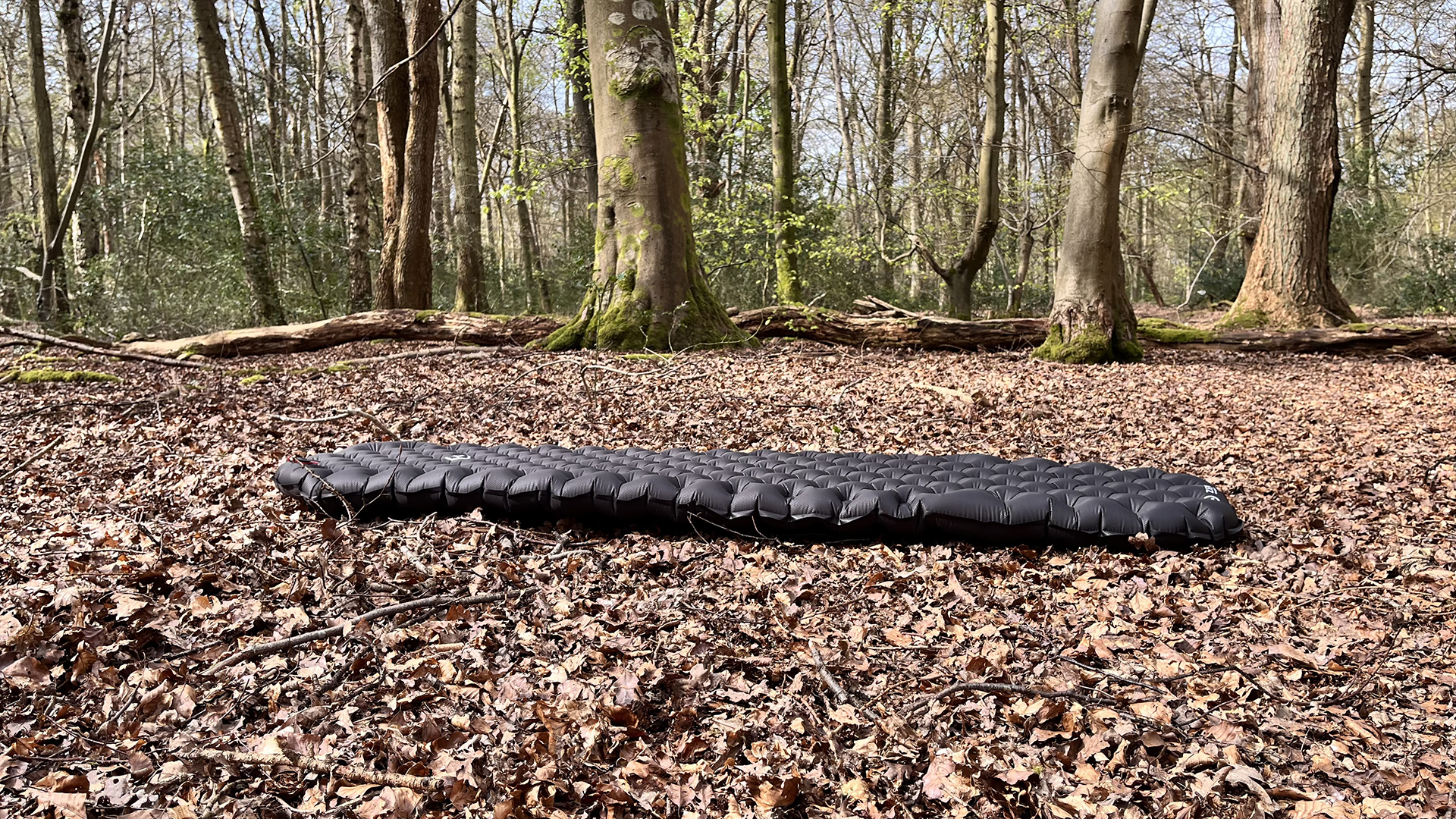
Zenbivy Ultralight Bed: the bottom line
To me, the Zenbivy Ultralight Bed is simply the most comfortable way to sleep outside. It keeps you warm down to freezing, comes with a tiny pack size, and can weigh as little as 1040g / 2lb 5oz depending on the configuration. And thanks to the intuitive and easy-to-use features, such as the simple clips along the sheet, the whole thing just effortlessly works. Add to this the high-quality, ultrasoft material that’s a joy to sleep in and the innovative build of the Zenbivy pillow and you’re left with unrivalled comfort – the best I’ve ever tried in all my years writing about sleep systems. In a nutshell, it’s safe to say that I’m a proud convert, and I don’t know if I’ll ever be able to sleep in a different system again. I just wish the Zenbivy Ultralight Bed came with a lower price tag, so we could all finally enjoy a proper night’s sleep in the backcountry.







